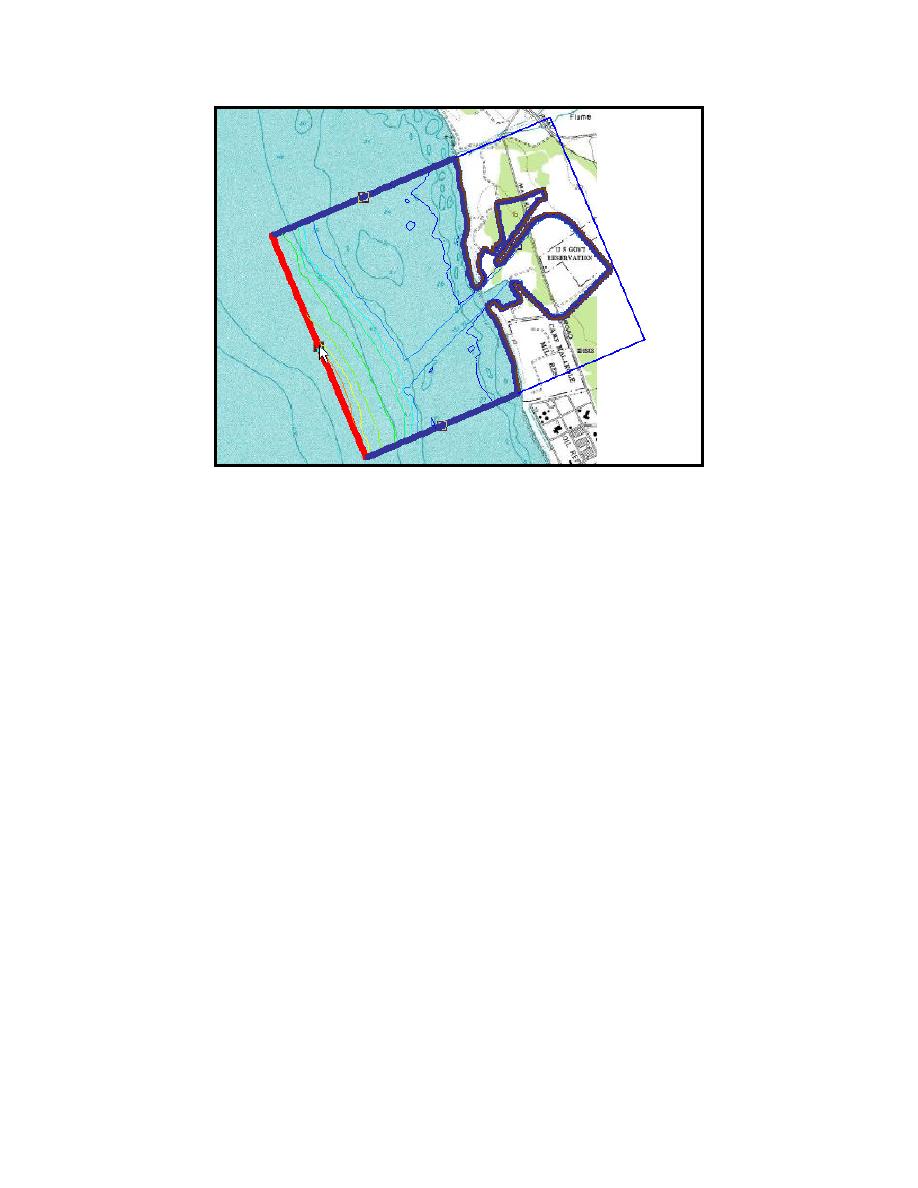
ERDC/CHL CHETN-I-70
May 2005
Figure 11. Wave maker cell string selected
c. Select BOUSS-2D|Assign BC command. Select the Wave Maker radio button and click on
the Options button. This brings up the BOUSS-2D Wave Generator Properties dialog. On
the left side of this dialog select the type of wave to simulate, i.e., irregular unidirectional
waves. Select the defaults to synthesize the time series and generate them from parameters.
Specify the series duration as 1,500.0 sec in this example. On the right side, select the spectra
type to be JONSWAP, and the option to specify significant wave height and peak period
values, Hs and Tp. Enter values of significant wave height and peak period as 3.0 m and 15.0
sec., respectively. Click OK to close both the dialogs. For further details on wave spectra
types and associated spectral parameters, users should consult Demirbilek et al. (2004) and
Nwogu and Demirbilek (2001).
d. As SMS generates the wave maker, it may find that the offshore edge of the grid is not of
constant depth, and warn the user. At this point the user is given the option of extending the
grid to a constant depth to improve model stability. Click the Yes button to extend the grid in
order to complete proper definition of the wave maker location.
zone where waves need be absorbed. Damping layers prevent waves from reflecting back into the
computational area. This may be necessary since reflected waves will affect the incident waves. In
this example, damping layers will be assigned to both lateral boundaries of the modeling domain that
will absorb waves leaving the domain. To do this:
a. Select the cell strings along the open sides of the grid between deep water and the coastline.
To select two cell strings, click on the first and hold the SHIFT key to click on the second
cell string.
b. Select BOUSS-2D|Assign BC... and select Damping.
10


 Previous Page
Previous Page
